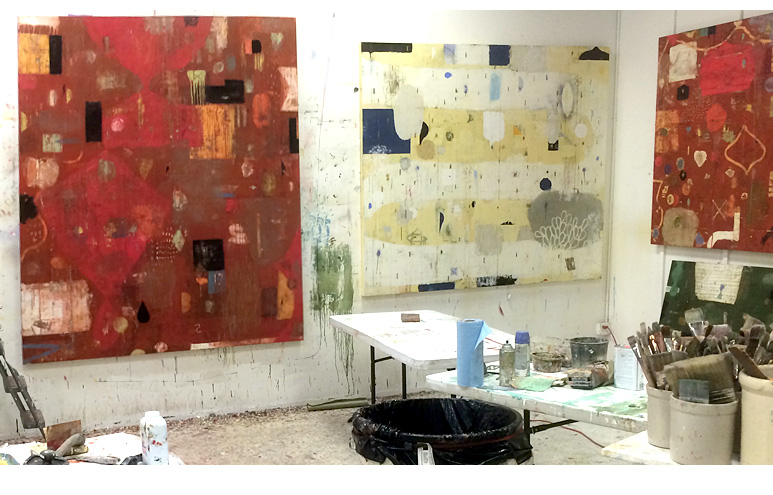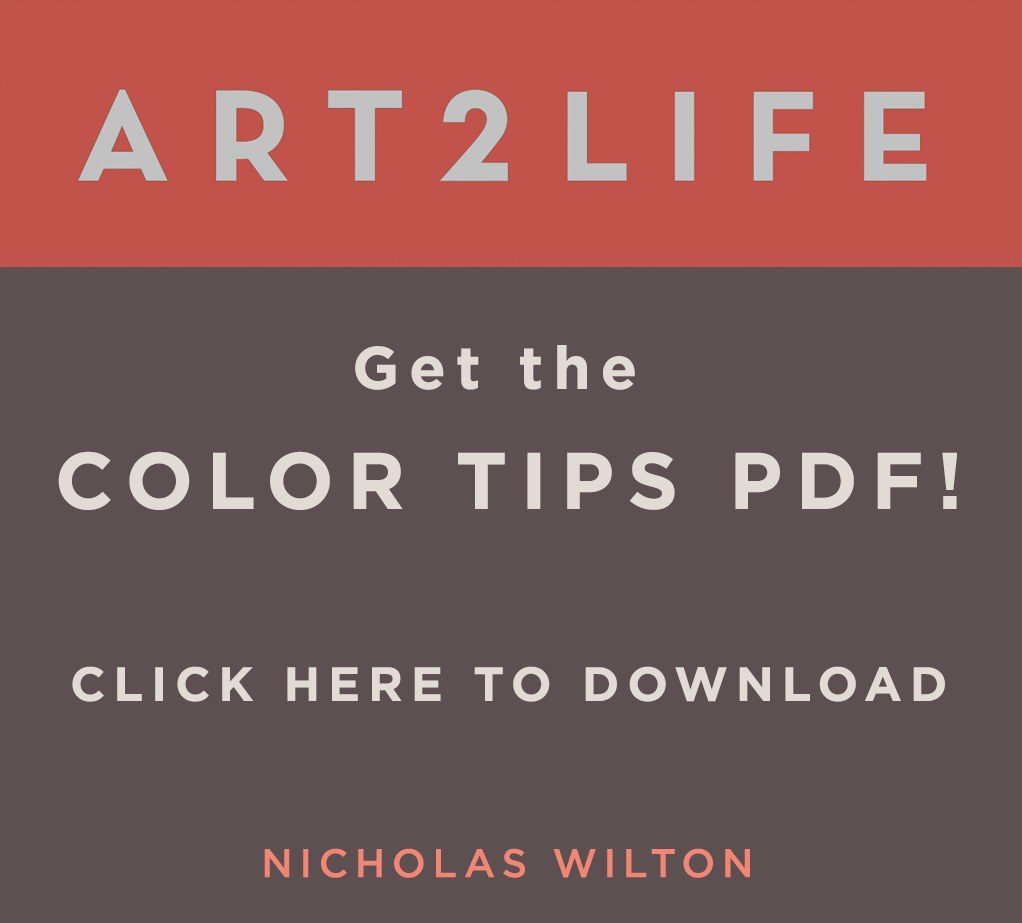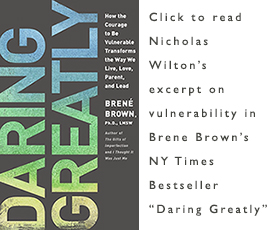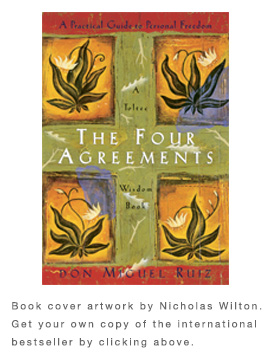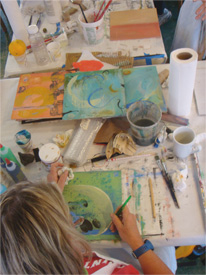Stay in the Driver’s Seat
I’ve recently had a change in how I think about my work when it is not going as well as I want it to. This change has helped me regain control of my creative process and has made it so much easier to paint.
Take a moment to watch the video, and let me know how you stay in control of your work.
The Stages of Learning
In my efforts to become a better teacher, I’ve been doing a fair amount of reading on how people learn. What I’ve discovered is that there are basically 4 stages of learning, each of which presents their own challenges and opportunities.
Which stage are you at? Watch the video and let me know!
Best, Nicholas
Take A Break
After working on a painting for about 3 hours, I find that the marks don’t come as easily, and it becomes more and more difficult to know where to go next. Fortunately I’ve discovered a little trick for getting around this issue. Watch the video to learn what it is.
How do you deal with creative roadblock?
Garage Sale Sunday
Hey everyone,
Today I am briefly talking about
how to avoid the “garage sale”
thing in your art.
To fix this you need to understand
DESIGN and VALUE
These were the first two Art2life Principles I
covered in last weeks Free Art2life Workshop.
If you find today’s talk helpful,
check out last weeks 2 lessons.
Both lessons will really set you
Up to better understand COLOR!
Lesson #3 which is coming out Tuesday!
Have an awesome Sunday.
Nicholas Wilton
It Takes A Long Time To Become Young
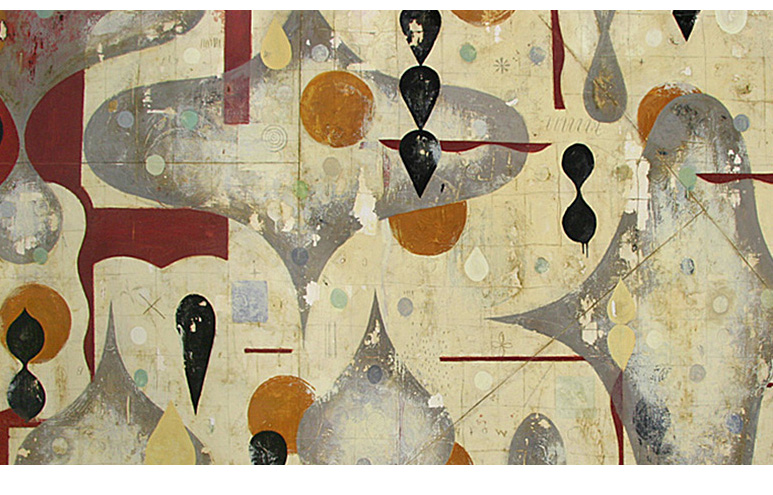 Have you ever noticed that when you are making your art and it is all working out that it is almost as if you are not entirely there? You are driving the bus but it seems like you do not have to try very hard. Almost like it is driving itself. Art making sometimes can feel that easy.
Have you ever noticed that when you are making your art and it is all working out that it is almost as if you are not entirely there? You are driving the bus but it seems like you do not have to try very hard. Almost like it is driving itself. Art making sometimes can feel that easy.
I love it when that happens but it rarely stays that way for long. If I overthink and concentrate too much I lose that ability to just let the art unfold naturally. Instead it feels hard and somewhat forced.
I realize I tend to tighten up when I am over focusing on a new technique or, perhaps, trying something I haven’t before. It seems like the making of the art just goes slower. It becomes more effortful.
However once I have learned that new something, once I have done it a few times it starts to become second nature again. I think it just takes time to integrate new information. And then I start to get those days that art making feels super easy again. It is like I am not even trying.
It reminds me of how I did things as a child. I remember just naturally getting involved in something, following my curiosity wherever it wanted to lead me. There was no agenda. No particular reason to do anything except for the simple joy of doing it. Everything was approached that way.
This is actually how I wandered into art in the first place. It was simply enjoyable.
I found this quote the other day by Pablo Picasso “It takes a long time to become young”
Which got me to thinking.
Maybe that is why it feels so refreshing to occasionally get totally in sync with our creativity. When our art just flows. It feels good, especially now, as busy adults with a world of concerns and long to do lists following us around. Maybe when we fall into that easy place where art making is simply effortless it is a reminder of what is still possible. The way it is supposed to be. Or rather the way it all started out being in the first place when curiosity and joy were simply enough.
How To Make Amazing Color
I wanted to do something special today and give a little tutorial on color. Specifically, I want to show you how to create color combinations that go well with one another.
As you might have guessed, the secret comes down to differences! Watch the video and let me know what you think – which colors are your favorites to pair together?
In gratitude, Nicholas
PS My free online workshop is starting on Tuesday, February 6th and I would love to see you there. To sign up, just go to www.artlifejoy.com
How to Make Your Art Bigger
So how do you make your work hold up when it gets super big? I mean really big, like 8-10 ft. big. At that scale – or actually any time your work gets bigger than yourself – it can either fall down or be stupendous. Scale makes everything better or worse. I am asked frequently how to scale up work effectively by my students. I have written about this before, but since then, I think I have had some more clarification that has come from my own struggles with this issue.
Here are three points I keep in mind when I am making my art big.
#1 MAKE THE CLOSE UP VIEW AS STRONG AS THE DISTANT VIEW
When making art that is bigger than yourself, it is important that the art looks exciting, not just from close up, but also from across the room. Sometimes when our art is large, we stand right up close and get lost in all its detail. However, from a distance the viewer can’t see these subtleties. If it doesn’t look interesting from a distance then no one will spend the time walking across the room to look at it.
A strong work of art needs amazing detail, subtlety (I call this the quiet conversation) juxtaposed with bold, loud composition created by relative big differences in value contrast which makes it possible to see clearly from far away (loud conversation.) Both conversations need to be equally strong, however the former has slight differences in value and in the latter, big differences. Value, which is the degree of lightness or darkness of something, is primarily what controls these two conversations.
I like to think of how my art would look to someone driving by a gallery in a car traveling at 25 mph. If, in that one second, the loud conversation is compelling, then and only then will the driver pull over and come into the gallery to have a look at my work.
#2 SCALE UP YOUR TOOLS AND MARKS
When the work gets bigger, then so should the tools used to make that work. Imagine a 1” brush being used on a 12” square painting. The brush relative to the size of the art is quite large. Now if you make that 12” square painting 72” x 72” square, it has grown in scale 36 times! Taking a brush only slightly bigger, say 2”, will in no way be enough to generate a similarly powerful brushy feeling of the 12” painting. Basically, going larger with your tools will help you scale up the feeling you achieved in the smaller work.
Also, what might be a bold gesture, done with a twist of the wrist on a smaller work might not be enough once the work becomes larger. Your emotion and the physical movement of mark making will have to also grow in scale to pull off larger work. Larger tools will help you achieve larger work. And remember that to lose control and to invite spontaneity into a large work of art you must really embrace it to be noticeable.
In other words, practicing out of control in a corner that no one will notice isn’t really losing control. You know what I mean…I do this too. We need to step it up in a major way, in all ways, to pull off big scale.
#3 IMAGINE YOUR ART’S BOUNDARIES ARE BIGGER
When working on your Art, especially something at scale, it is important that you push yourself to think beyond the confines of the edges of your actual Art. Imagine that your art is merely a window into something bigger. Imagine you are creating a cropping of something that is bigger as you work. A shape that is made while worrying about the actual boundary of the art will feel small and self-conscious compared to one that can disregard the physical edges of the Art.
Imagine while you are working on your art that there is 12”or even 20” of border beyond the canvas. This is there for you to consider as well; it can be a runway for mark making to begin or end that will cross over or out of the actual art you are making. If you can play, work, like there are no boundaries, your art will feel more expansive. Sometimes I even let my brush paint on the actual studio wall outside the borders of the canvas.
Be expansive in all ways so that your art will not just look large but will feel large as well. It needs to be both.
Keeping these points in mind as you scale up really helps me.
What ways or thoughts do you use to make your Art bigger? Please comment below.
In gratitude, Nicholas
Don’t Forget the Wax
I’ve been getting quite a few questions recently about one of my tools: cold wax medium. So, I thought I would make a little video about it for you all to enjoy!
Watch the video and let me know what you think – what special tools do you use in your art practice?
In gratitude, Nicholas
PS I’m starting my free online workshop soon and I would love to have you come along. To register, just go to www.artlifejoy.com
PSS You can order some of the cold wax medium I use by going here: https://tinyurl.com/y8ede2e6
The Thinking That Can Save Your Art
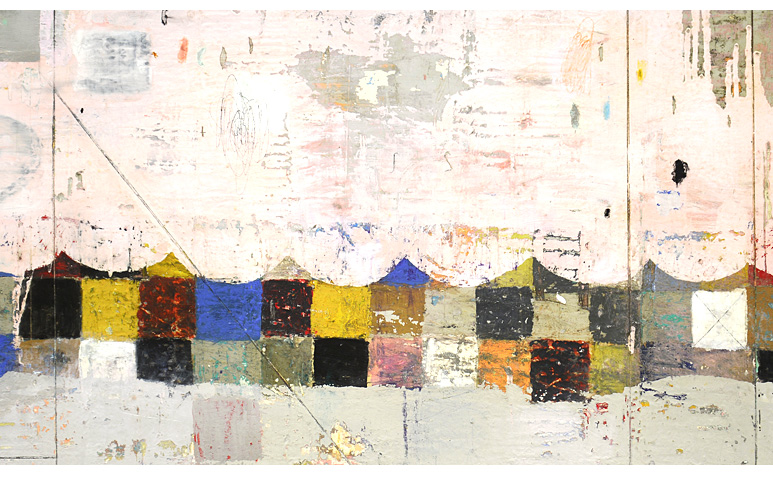 One of the trickiest parts of being an artist is maintaining momentum. I struggle with this and I also am amazed at how many artists that I work with do too.
One of the trickiest parts of being an artist is maintaining momentum. I struggle with this and I also am amazed at how many artists that I work with do too.
The making of Art can be super hard and then it can feel easy and effortless. It is a roller coaster ride that, for the most part, is tolerable. After all, life is like that too. We have good days and bad days.
However, when we add the additional difficulty of just showing up, of trying to squeeze our art practice into our busy life, it all can feel somewhat exhausting. In fact, for many artists, it can derail their ability to make art at all. It just is too overwhelming.
However, it doesn’t have to be. The key to this is understanding that there are 2 challenges here: the first being the actual garden-variety struggle involved with art making, while the second has to do with creating a sustainable art practice.
Art making always involves a degree of struggle. Getting information about materials, getting clear on what your own art is about takes time. It is an ongoing process. However, fixing the second one, making it easier to actually show up to make the work, is far easier to remedy. It has a lot to do with your thinking. And that can change very quickly.
After years of making art I came to an important realization about my art practice. It has buoyed my art making and has saved me countless hours of time.
It really is quite simple. And it is this:
Changes come more easily when you are making your Art than when you are away and merely thinking about it.
I used to do a lot of worrying and fretting in the middle of the night about whether my work was good enough or how I might fix certain problems. I would spend considerable time looking at other artists’ work to see if maybe the answers might lie there. It wasn’t that worrying and spending time searching the Internet for answers wasn’t helpful, as sometimes it did shed some light onto my challenges. However, it just became tiring to be always thinking about the difficulty in my art 24/7.
I was involved in the struggle of making art even when I wasn’t making art, which was pretty much most of my day. So I stopped. I realized that if I just postponed worrying about the art till I actually was in front of it that I could save myself hours of needless time focusing on trying to solve imagined problems.
And then I found out something wonderful and surprising.
I came to see that solving the problems and improving my art was far easier to do when I was actually in front of it, than when I was out to dinner 5 hours later with friends or even trying to sleep. It seems obvious now but it took me years to figure this out.
Additionally, much to my surprise, rarely were the imagined problems, the ones I was constantly thinking about when I was not making art, as difficult or as complicated as they turned out to be once I was. Things just were not that bad once in my studio listening to Earl Klugh on my Bose headphones and proactively making real changes to my art.
My father used to say to me that our problems, our challenges in life will never look bigger, feel more daunting than they do at 2 am in the silent darkness of a sleepless night. I think there is a lot of truth to this. Context matters.
There is no burning imperative to figure everything out remotely, when you cannot even see your art. You don’t have to do it the hard way. Avoiding this pattern will free up a huge amount of time and energy for when you are actually making art.
Instead of overly thinking everything, spend the time you are not making art doing those things that inspire and make you feel alive. It is, after all, the richness, the quality of the time you spend not making art, that so powerfully and poetically effects the time when you do.
In gratitude, Nicholas
Do Anything
When I used to start a painting, there was always a little period of time where I would stare at the blank panel, unsure of what to do. As the years have gone by however, I’ve developed a trick to get past this artistic road block.
Watch the video, and let me know what you think – how do you figure out where to go next with your work?
In gratitude, Nicholas
PS I’m starting my free online workshop soon and I would love to have you come along. To register, just go to www.artlifejoy.com
